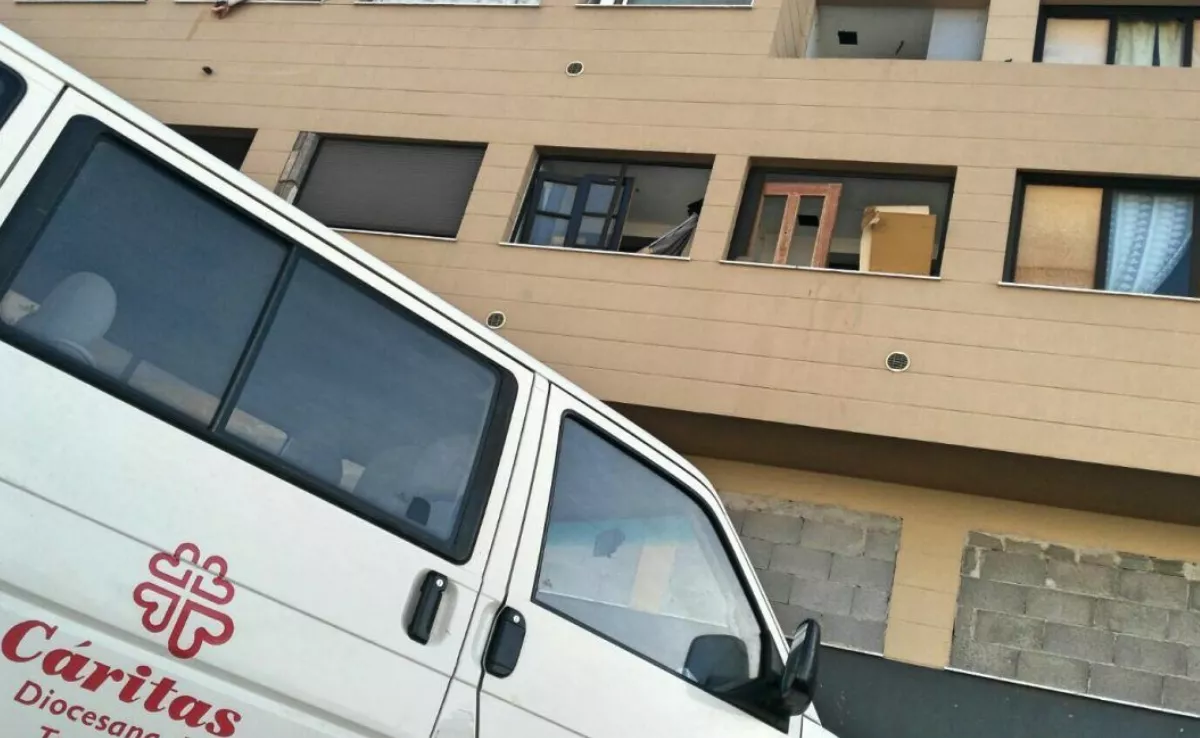
The lack of housing is not new in the Canary Islands, but it increasingly disrupts the lives of many people on the islands, especially children growing up in vulnerable situations, even though the head of the household may have a job. “Years ago in the Canary Islands, it was difficult to see children without support. In cases of housing, we have already encountered minors in situations of significant vulnerability,” explains Alejandra Hernández, coordinator of the “Base 25” project from Cáritas Tenerife.
The housing problem expands across different fronts, ranging from those living on the streets, through those living in inadequate conditions or settlements, to those who are in a situation of squatting (only 0.02% of the total, according to Cáritas data) and those living in what are termed insecure housing.
Thousands of people each year face the issue of insecure housing, which revolves around a foreclosure procedure, a rental problem, or a precarious situation occurring when there is no legal link to the property.
Among the various cases affected by the lack of a legal link to the property are, for example, mothers who, after a separation, have lived in the property with their minor children, but lose their right to that roof when the children reach adulthood. Another case involves relatives caring for an elderly person who passes away but has not left the property in inheritance, and it is claimed by the rightful heirs.
In the rental sector, the most common problems usually involve requests for tenants to vacate the property before the lease is up, or, especially, difficulties in making rental payments.
“If we do not roll up our sleeves, politicians and public management regarding social and protected housing, we will hardly be able to get out of this predicament,” says the coordinator, emphasising that housing is a foundational right supporting other rights. “If housing collapses, your life falls apart because health, privacy, the place where we develop our lives, and job security are all broken,” argues Hernández, highlighting how outrageous it is to see housing so often linked to investment rather than to human rights “which is what it truly is.”
The thought of potentially losing the security of having a home is so distressing for those who suffer it that what they need least is distance and late bureaucracy, rather the opposite. “We visit people in their homes. As Cáritas, we wish to add that extra touch of closeness,” she notes, mentioning that individuals in this situation “are overwhelmed and feel like everything is falling apart.”
“Normally, they face stressful situations and high spikes of anxiety,” she points out.
The project called “Base 25” from Cáritas Diocesana de Tenerife aims to serve as a vehicle to inform and advise those at risk of losing their rental homes due to various circumstances or who may be affected by a foreclosure. “We want people to know their rights and what they are,” she adds.
In 2024, the team of professionals from Base 25 (made up of social workers, legal advisors, and social integrators) assisted 733 households, translating to 1848 individuals.
“We do not look for housing. We inform and advise those affected,” she clarifies, adding that her team presents different options and actions to follow, allowing individuals to decide what to do. “40% of the cases we handle manage to stay in the housing they occupy. Another 40% receive advice but do not inform us of their final decisions.” She indicates that some decide to live with people in their network, while others move to a commercial property or garage.
On the other hand, 2% go into temporary accommodation, and 1% find themselves in a worse situation than before. Although the Base 25 project operates across the entire island of Tenerife and the issue is widespread, “cases are already being reported even in Vilaflor,” with Arona and Granadilla alongside Santa Cruz and La Laguna being the municipalities with the most instances of insecure housing, closely followed by Puerto de la Cruz and Adeje.













